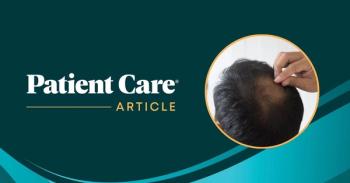
Nondermatophyte Onychomycosis
A 46-year-old man with diabetes presented for evaluation of gradual fingernail deterioration, which had failed to respond to several courses of griseofulvin and a recent 3-month course of daily terbinafine. The patient-who worked as a bartender-was otherwise healthy.
A 46-year-old man with diabetes presented for evaluation of gradual fingernail deterioration, which had failed to respond to several courses of griseofulvin and a recent 3-month course of daily terbinafine. The patient-who worked as a bartender-was otherwise healthy.
.Ted Rosen, MD, of Houston noted that all 10 fingernails were dystrophic and had brown discoloration. The toenails were normal, as was the remainder of the skin examination. Several cultures obtained from various nails consistently grew Aspergillus species.
Although Trichophyton rubrum causes about 90% of all cases of onychomycosis, nondermatophyte nail infection can occur. This is especially true among immunocompromised patients and those who have their hands immersed in water for extended periods. To confirm a nondermatophyte infection, the results of at least 2 separate cultures should demonstrate the same saprophytic organism.
Treatment of nondermatophyte onychomycosis is problematic and may involve a certain amount of trial and error with the use of oral antifungal agents (eg, fluconazole, itraconazole, and terbinafine). This patient was successfully treated with 4 monthly pulses of itraconazole (400 mg/d for 7 days of each month).
Newsletter
Enhance your clinical practice with the Patient Care newsletter, offering the latest evidence-based guidelines, diagnostic insights, and treatment strategies for primary care physicians.





















































































































































































































































































